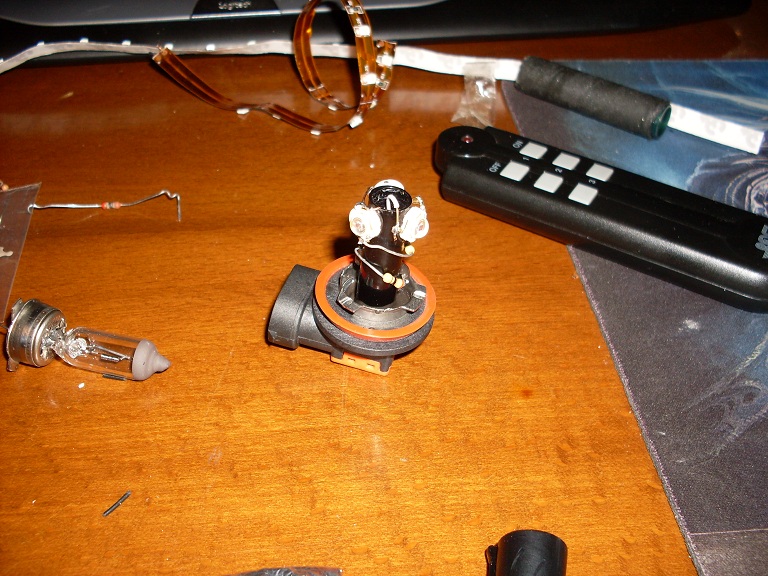Quote:
Originally Posted by Naxeus

Here it is my handmade H8 led angel bulb...

Notes: You have to calculate what resistors you have to use that depends on your leds and setup! You can use ohm's law for that:
Ohms = ( V.bat - V.led ) / Amp.led.
*where V.bat = voltage of battery, V.led = voltage of LED, Amp.led = Amp of LED
Example for my leds: (12v - 3*2v) / 0.35 A = 18 ohms but i used 2*24 ohms for safety and also for the correct brightness!
|
I don't recommend anyone try to copy this as shown above, for the following reasons:
1) the LEDs pictured above (1w) generate significant amounts of heat and are designed to be mounted on a metal heat-sink with thermal compound, not glued to a plastic pencil.
2) As shown, there are three LEDs in series which have a total forward voltage of 6v, which means the resistor must drop the remaining 6v (actually, closer to 7.5v, since the nominal battery voltage is 13.5v). He used Ohm's law correctly but neglected to take power dissipation into account. 350mA at 6v is 2.1w of heat that must be dissipated, in this case through a 1/4w (shown) resistor. Result is a guaranteed fire or burnt out resistor within seconds.
3) Even with the "correction" to 48 ohms (limiting current to 150mA, and brightness to about 1/4 the nominal of the LED) there is still 1.1w being dissipated in each resistor... While this won't burn out as quickly (a 1/4w resistor can run for a few hours at 1/2w before giving up, and even 1w for a few minutes) it will still burn out, and possibly melt (or ignite) surrounding surfaces.
To do this correctly, the center stalk must be an aluminum heatsink and 350mA + LEDs require a regulator, resistors are not practical when dissipating watts... In short, unless you've designed with high-power LEDs before, I'd leave this to a major manufacturer or use regular 5mm or 3mm (20mA) LEDs.